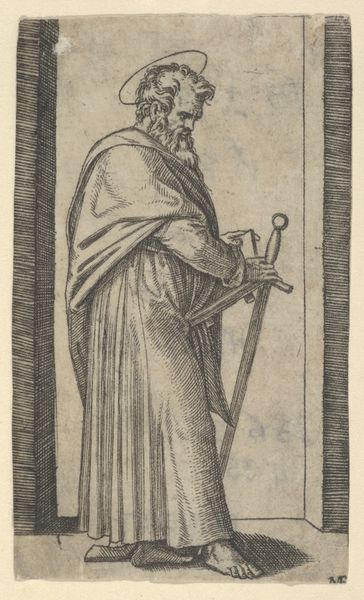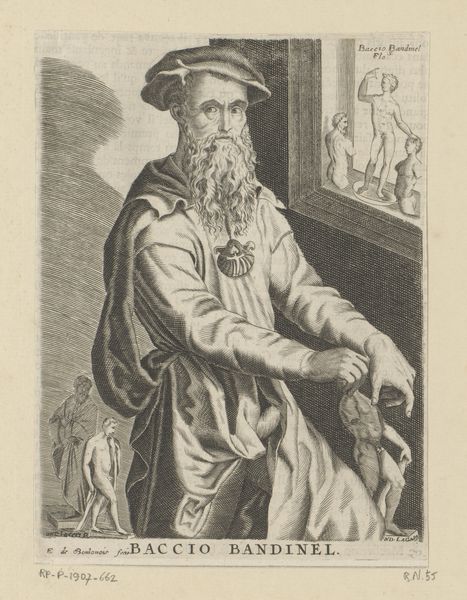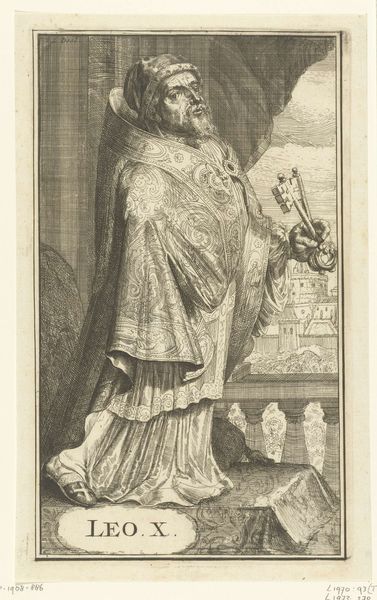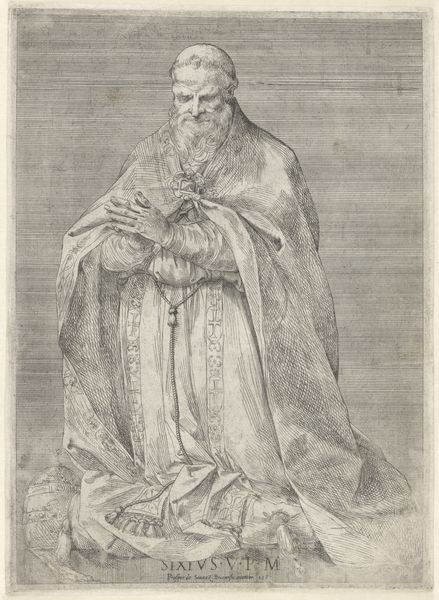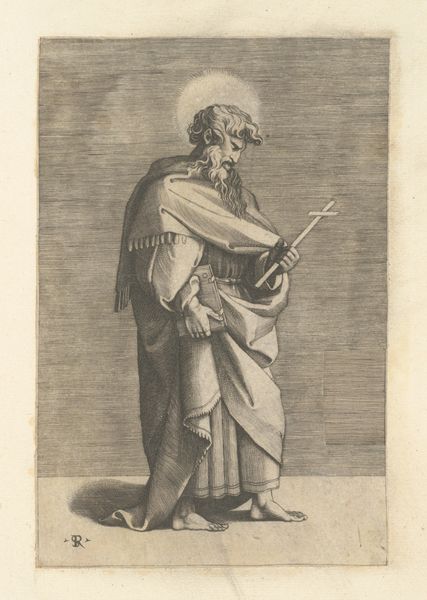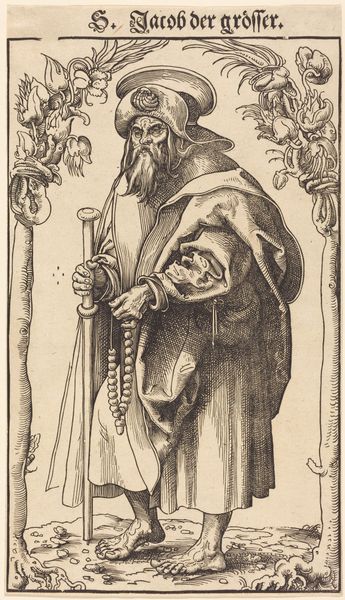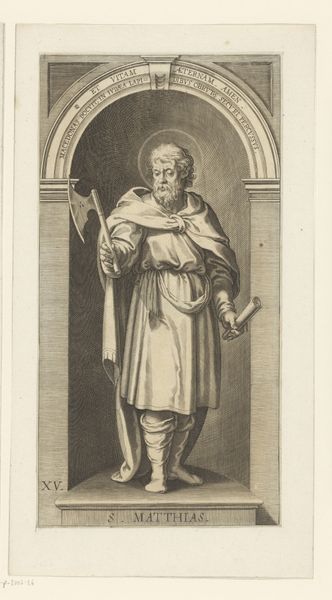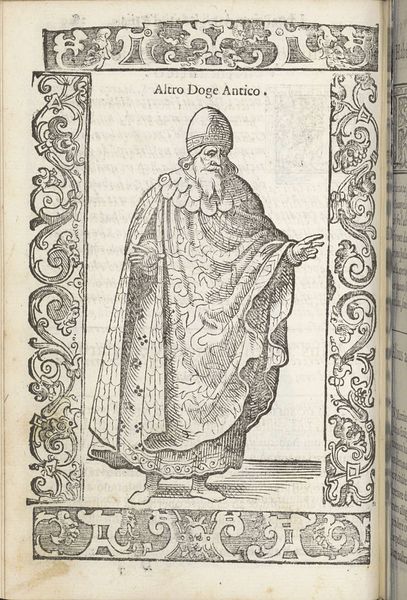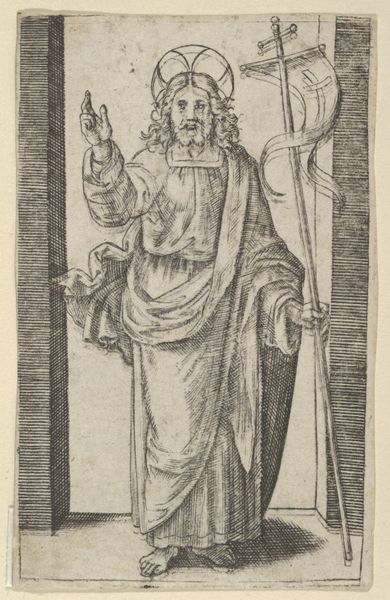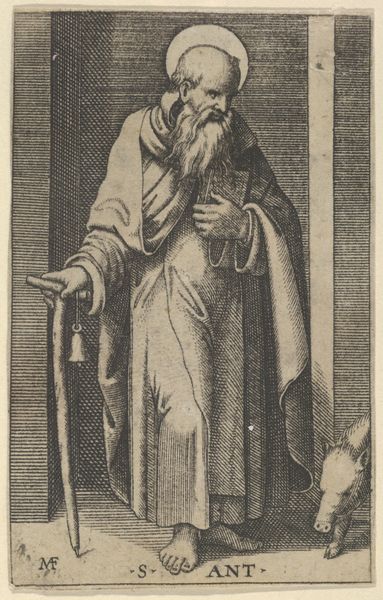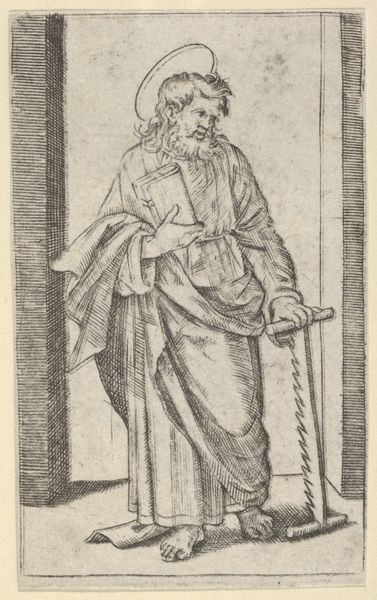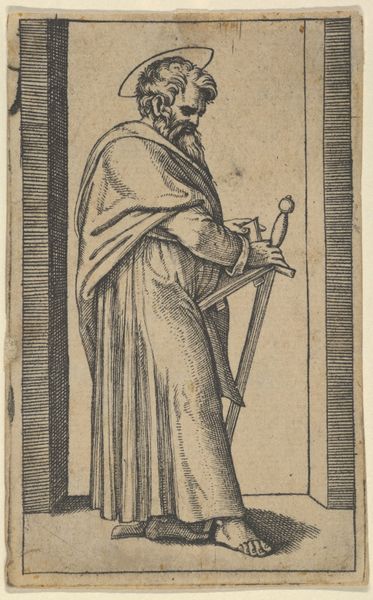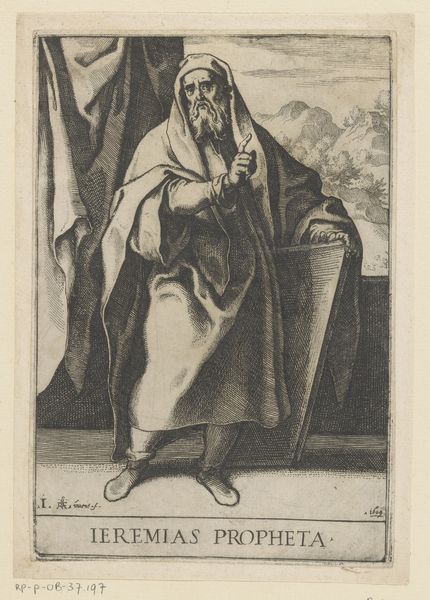
print, engraving
#
portrait
#
baroque
# print
#
old engraving style
#
figuration
#
line
#
history-painting
#
engraving
Dimensions: height 354 mm, width 239 mm
Copyright: Rijks Museum: Open Domain
Editor: Here we have "Portret van Mathieu Molé of Pierre de Séguier," an engraving by Michel Lasne, created sometime between 1600 and 1667. It’s striking how formal the composition is, and the detail achieved through the lines is really impressive. What captures your attention in this piece? Curator: Immediately, I see this print as a powerful statement about the subject’s position within the 17th-century French establishment. The use of engraving, a relatively reproducible medium, speaks to a desire to disseminate this image widely, reinforcing the power and status of the sitter within society. The symbols, the coat of arms, the imposing figure, even the Latin inscription… They all contribute to the construction of a carefully managed public persona. Do you think it romanticizes him? Editor: I can definitely see how it’s trying to present an ideal. But I wonder, who was the intended audience? Would ordinary people have really understood all the symbolism, or was it more for other members of the elite? Curator: Exactly! That’s a key question. Prints like these often circulated amongst the political and intellectual circles. They functioned as visual endorsements and solidified alliances. Think of it as early PR – cultivating a specific image for those who mattered most to the sitter’s political survival and social standing. What about the inscription - do you see how the iceberg relates to the idea of strength and resolve? Editor: I hadn’t really considered that the "mole" in the picture could mean a solid breakwater – what do you think it implies that the figure’s strength is akin to withstanding the perils of the sea? Is the text a message that the engraving is making permanent? Curator: Precisely. It’s fascinating to consider how this seemingly simple portrait actively participates in shaping the historical narrative and solidifying power dynamics. Editor: It makes me think about how portraits even today are used to convey specific messages, although the media may have changed! Curator: Yes, the medium is different, but image construction and political projection have historical roots. That’s the real staying power of an image like this!
Comments
No comments
Be the first to comment and join the conversation on the ultimate creative platform.
